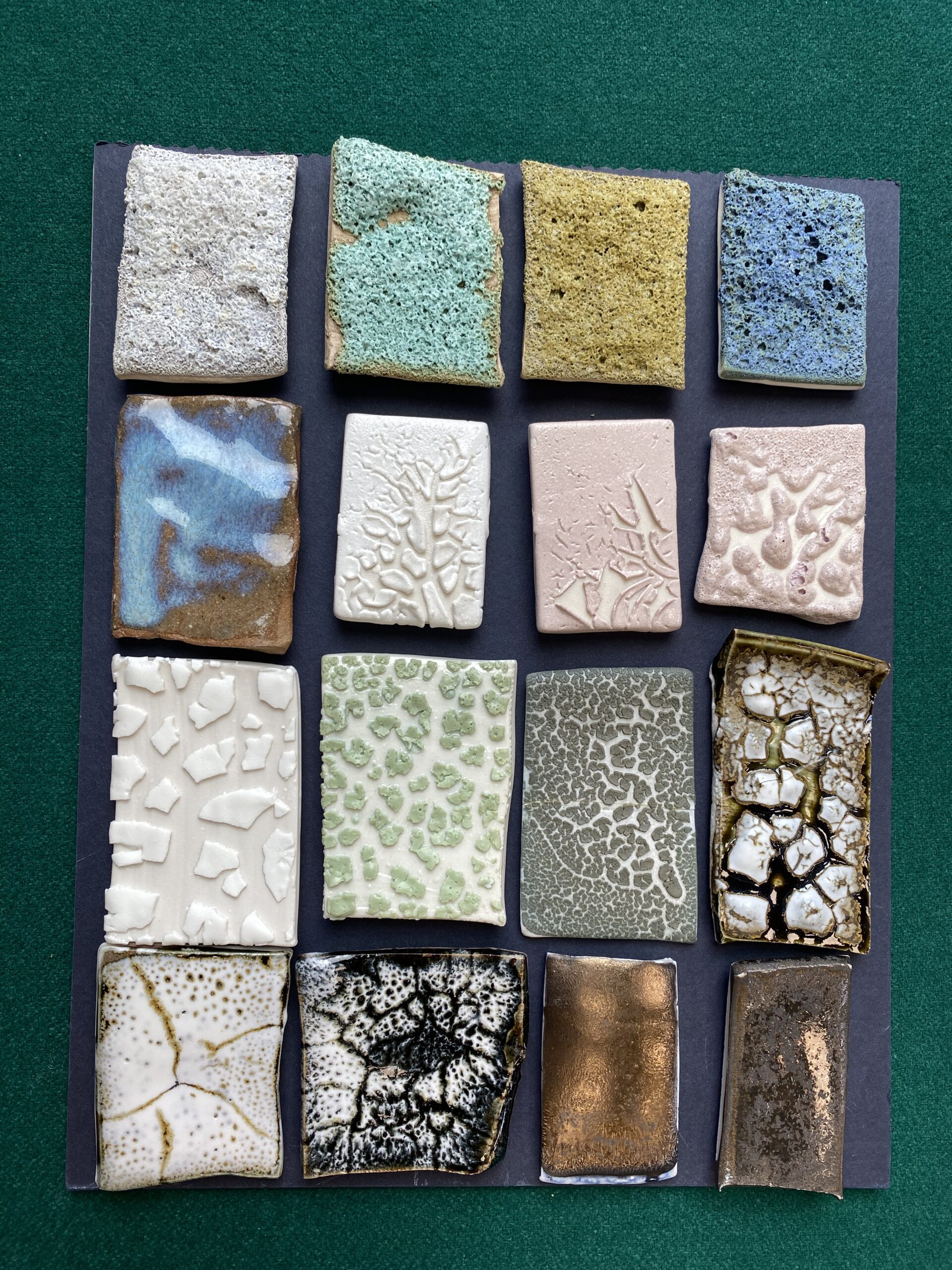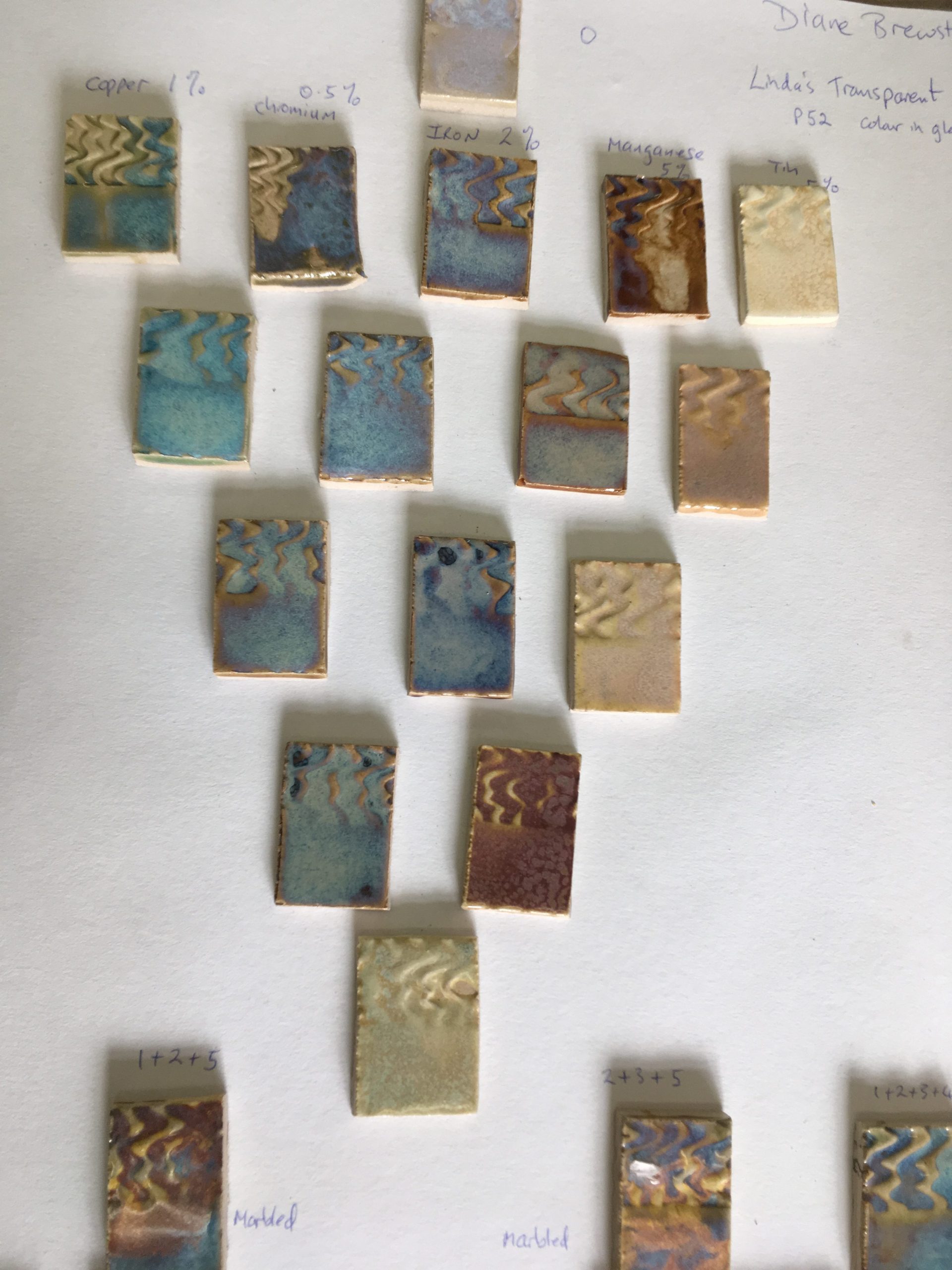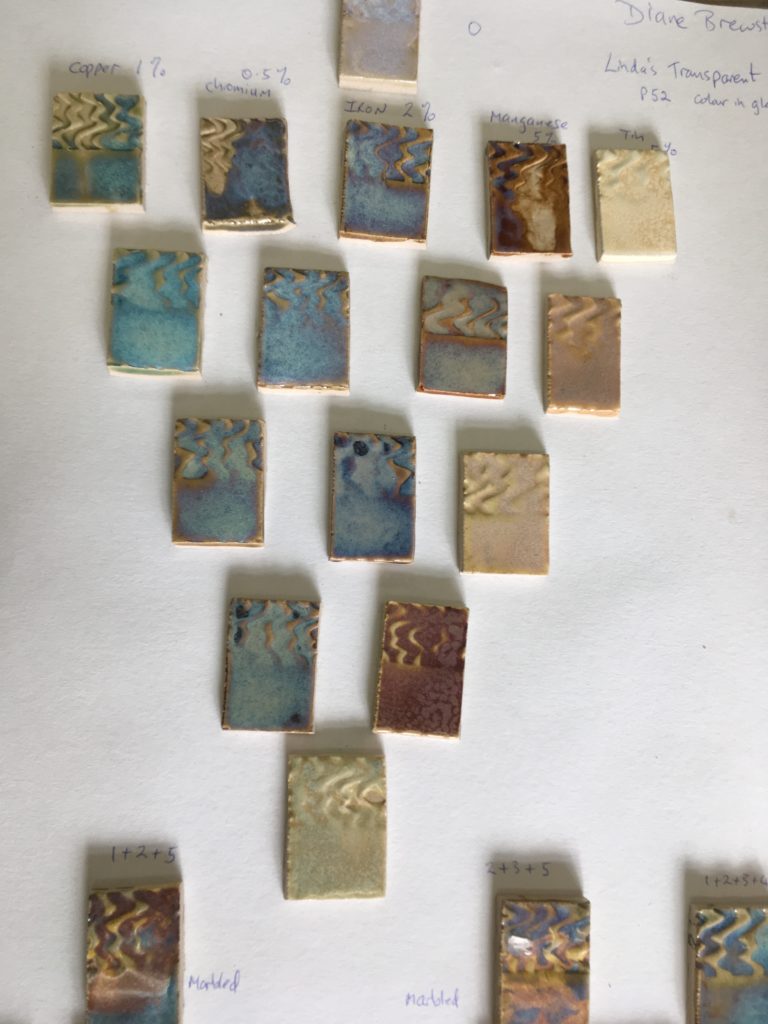
I have a new online course out in August on Special Effect Glazes. This course builds on my How Glazes Work online course. In the new course I demonstrate how to make and adjust volcanic glazes and talk about the chemistry behind special effect glazes: crater, crackle, crawl and crystalline glazes.

What you will learn:
Demonstration
How to mix glazes, analyse fired glaze tests and adjust glaze recipes to get the results you want. The practical demonstration will focus on volcanic glazes. You will need to buy the materials soda feldspar, kaolin, strontium carbonate, titanium dioxide and fine silicon carbide and make and biscuit fire 10-20 test tiles if you want to make the glazes yourself.
Lecture
Glaze chemistry
1. The three main components of a glaze and what each material contributes to the glaze.
2. Glossy and matt glazes.
3. Glaze defects/special effects.
4. Different types of special effects; crackle, crawl, crater, crystal, oilspot and metallic glazes. Health and safety.
The course is suitable for intermediate potters and ceramicists. It helps if you have already done my previous course on How Glazes Work. The course covers a lot of material condensed into a short demonstration and lecture. I cover the same material that I teach on my two-day in-person special effect glazes course. The special effect glaze recipes will be given in the course download. Further recipes are available in my book Special Effect Glazes.
To join the course, just join my membership. My course on How Glazes Work is also included. The Special Effect Glazes online course will be launched on 12 August 2025. You can watch the videos any time during the next year.




